
SPECIAL PLACES

Hartney Rural Sites
|
  |

Melgund &
Hartney
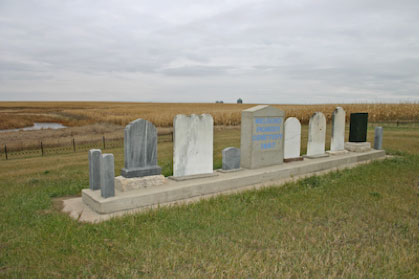 The
restored Melgund Cemetery
http://vantagepoints.ca/stories/melgund-village/
Southwest
of Hartney on Melgund Road, there is a small cemetery at a
crossroads. Established in 1887, it was the first graveyard in the
region. Across the road, a cairn helps to mark the spot that was home
for so many people over so many years.
Early in
1881 Samuel Long and John Fee came from Ontario to this area.
The sod shack they erected that first season, soon known as “The
Shanty” or “The Orphan’s Home”, was a stopping place and temporary home
to many settlers over the next two years.
It would
be nine years before the railway entered the district and the
town of Hartney would be created.
In the
meantime it was Melgund that seemed to be where things were
happening
The
restored Melgund Cemetery
http://vantagepoints.ca/stories/melgund-village/
Southwest
of Hartney on Melgund Road, there is a small cemetery at a
crossroads. Established in 1887, it was the first graveyard in the
region. Across the road, a cairn helps to mark the spot that was home
for so many people over so many years.
Early in
1881 Samuel Long and John Fee came from Ontario to this area.
The sod shack they erected that first season, soon known as “The
Shanty” or “The Orphan’s Home”, was a stopping place and temporary home
to many settlers over the next two years.
It would
be nine years before the railway entered the district and the
town of Hartney would be created.
In the
meantime it was Melgund that seemed to be where things were
happening
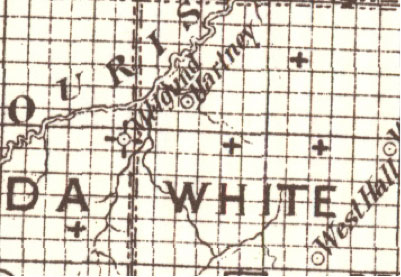
Both Melgund and Hartney
appear on this map from 1887. There were no
towns as yet – the map shows post office locations.
The name
Melgund first appears as a Post Office opened in 1882 in the
home of W.J. Higgins. Rose School opened in 1884, one of the first in
the area. It was also used as a church before the Melgund Methodist
Church was built across the road.
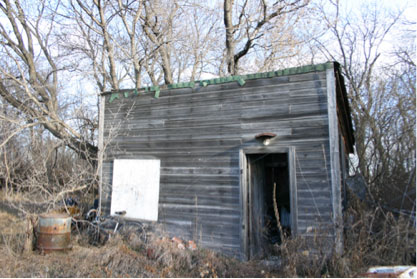 This small
building served as the Melgund Post Office – and likely as a
residence for a time as well.
This small
building served as the Melgund Post Office – and likely as a
residence for a time as well.
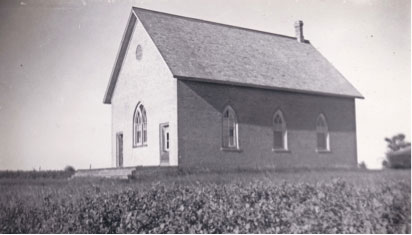 Melgund
Methodist Church, taken in 1946
Melgund
Methodist Church, taken in 1946
When the first settlers
arrived they had to build
some shelter, break some sod, and plant some grain and vegetables.
Before
long they would get together and build a school. They
might build a church, and then, perhaps, a general store or a
blacksmith shop might open for business.
But most
such settlements never did become towns as we know them, with
rows of houses and a main street for stores and shops.
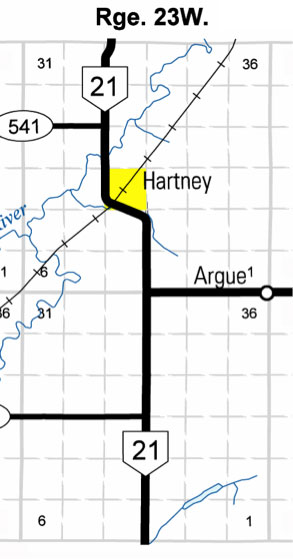

Hartney Rural Highlights
Fred Turnbull Farm House
NE 28-5-23 on Melgund Rd
217.G.6 / 1899
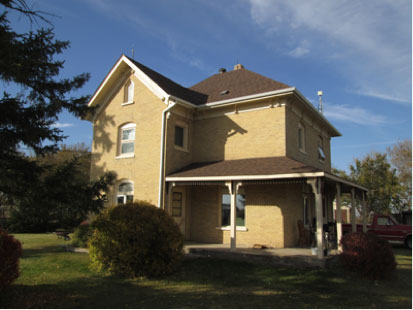
Fred Turnbull purchased the property from Edgerton Black in 1899 and
built the house
Owned by the Turnbull family until 1972
Well kept – many original features.

George Agnew Farm House
NE 14-5-23
217.G.11 / ca. 1890

George Agnew was a pioneer of 1881. His stone house has been painted.

River
Park Farm
SE 17-6-23
217.G.2 / 1910 (House) 1913 (Barn)
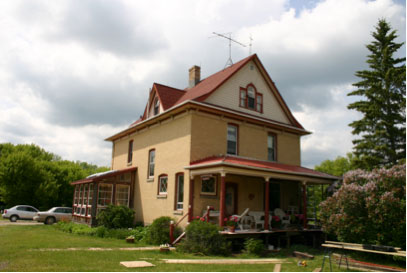
This
brick home, with its large gabled attic was built by Richard Fry
from a prefab package that was delivered by rail. It has windows with
leaded glass, fir floors, cedar baseboards and some pressed tin
ceilings.
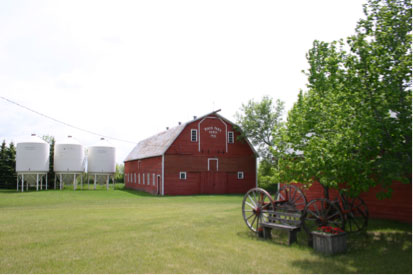

John W. Thomas House
SW 31-5-23
217.G.8 / 1904

The house was built by John W. Thomas on property acquired by his
father Charles in 1897. It is close to Melgund School and Church and in
2017 was owned by John W. Thomas’s Grandson.
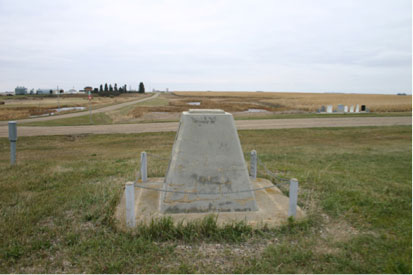

Joe Grierson Farm Site
SE 8-5-23
217.G.13
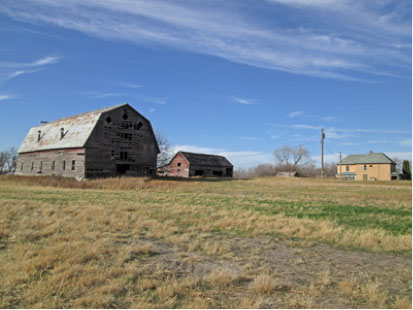
The original builder was Elwood Hodgson. The site features a fine home
and barn on what would have been a well-appointed farm yard.
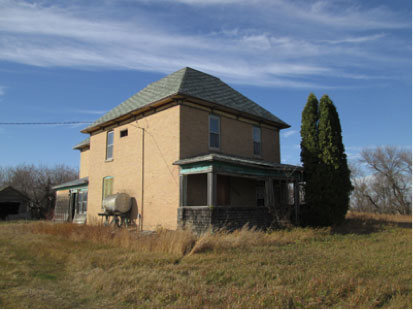

John More House
SE 4-5-23
217.G.14 / 1905
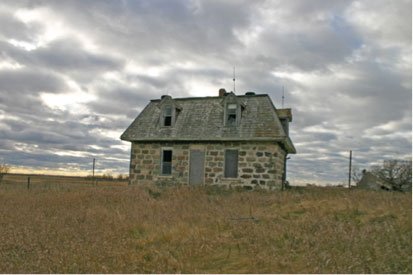
The childhood home of educator Janet Louisa May More, whose parents
farmed in the vicinity. It now stands vacant and open to the elements.
A windmill stands along crumbling outbuildings.
|
|

